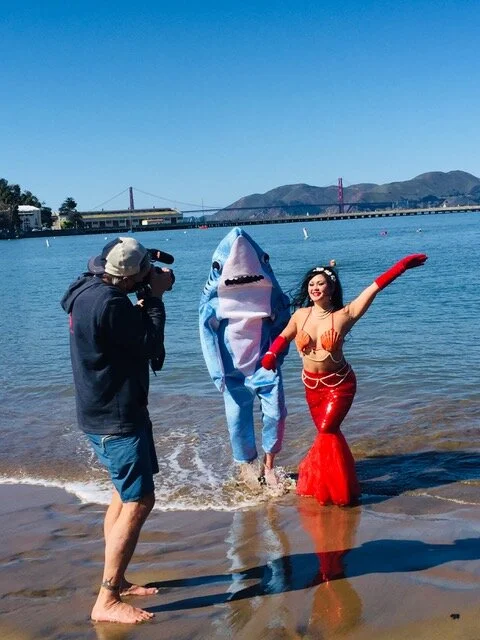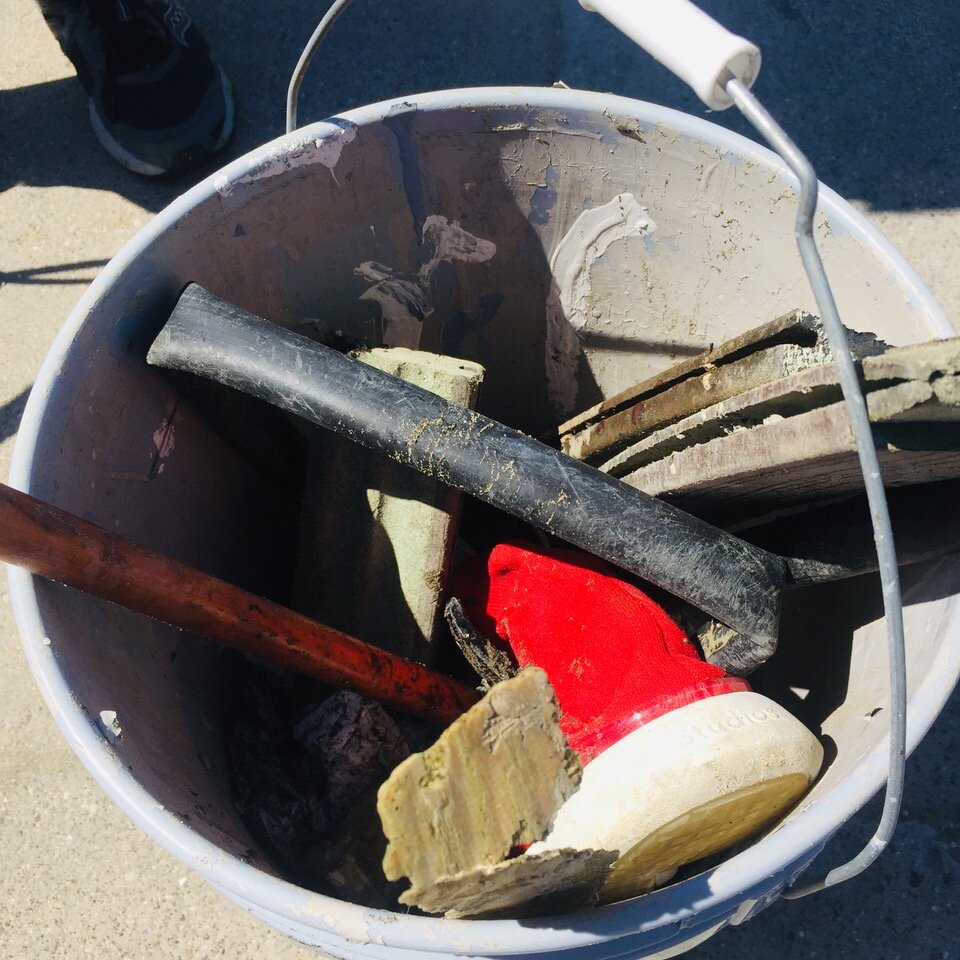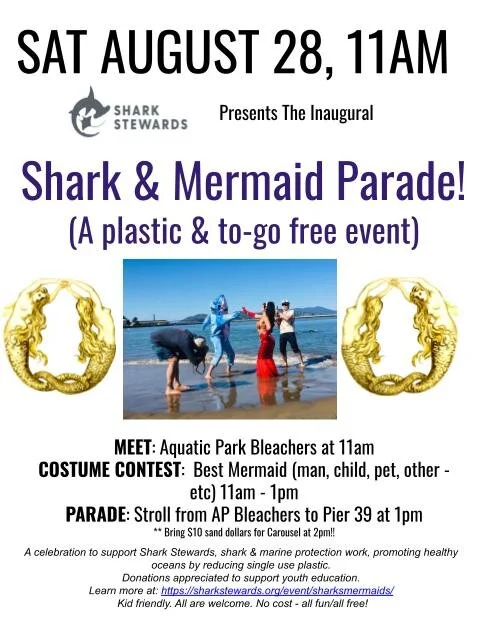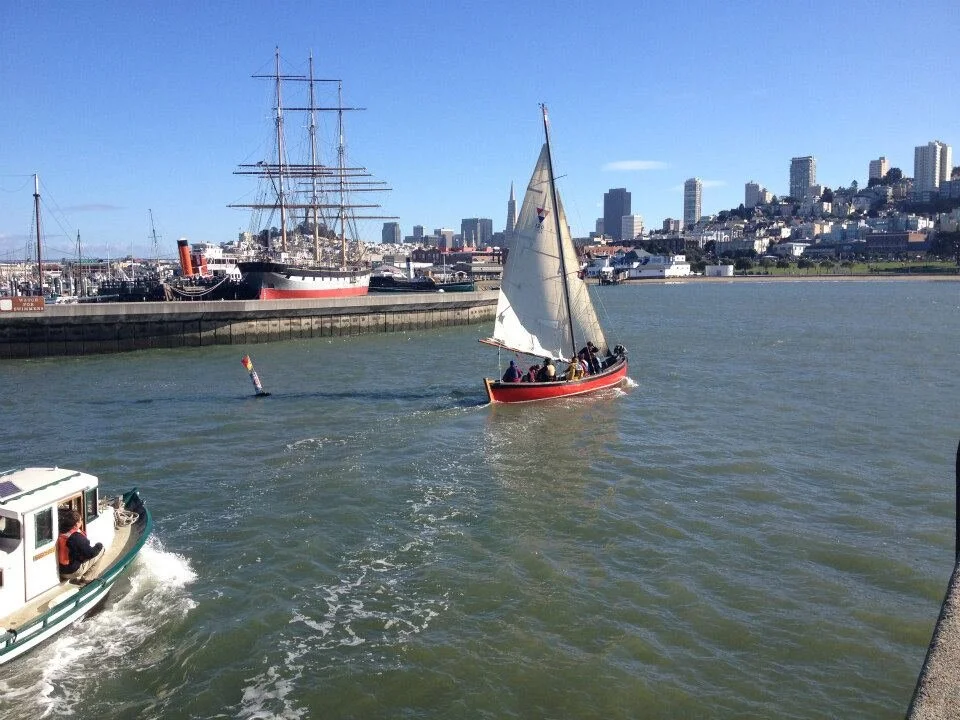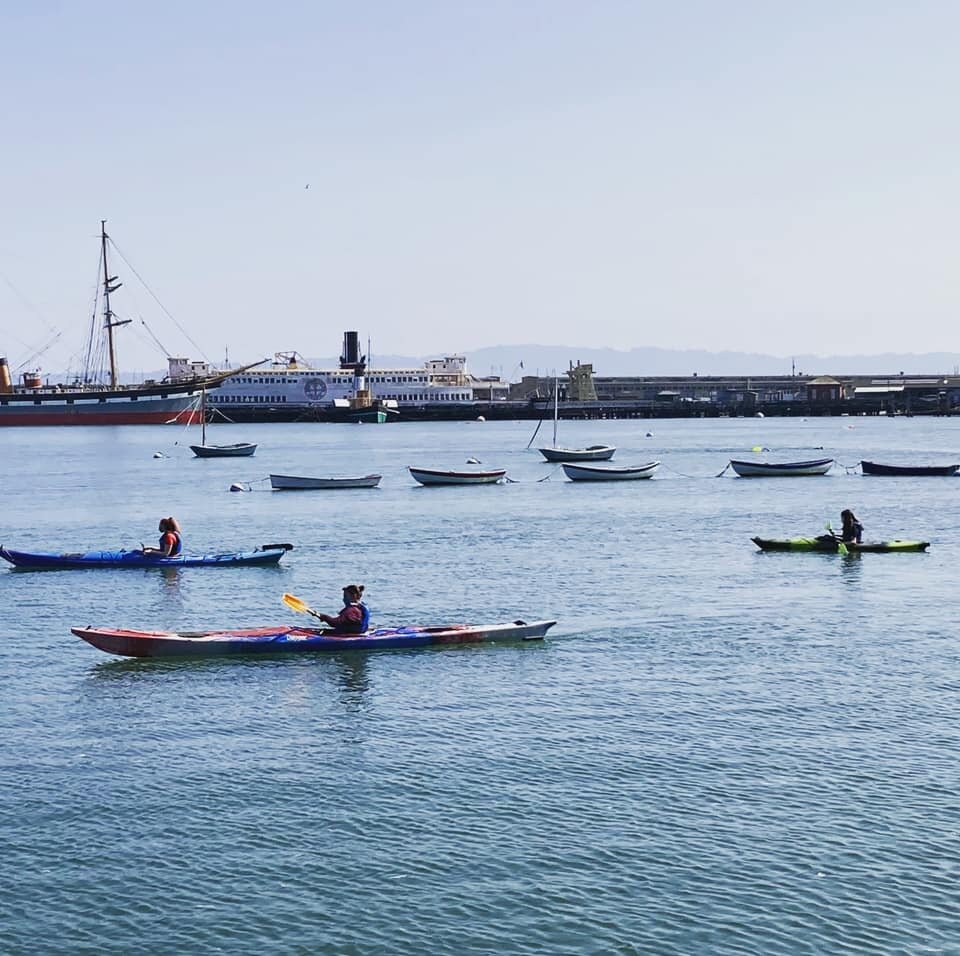Preserving the Heart of Our Community: The Aquatic Park Pier Restoration Project
Welcome to our blog, dedicated to the restoration and preservation of a cherished community landmark—the Aquatic Park Pier. This project is not just about repairing a structure; it's about safeguarding a piece of history, enhancing our local environment, and ensuring that future generations can enjoy the beauty and benefits of this unique space. We invite you to join us in this mission by learning more about the pier, understanding its significance, and considering a donation to help us achieve our goals.
Our Pier shares a rich history worth preserving for future generations!
A Rich History of the Aquatic Park Pier
The Aquatic Park Pier, located in the heart of San Francisco, is more than just a scenic spot; it's a historical treasure. Originally built in the 1930s as part of the Works Progress Administration (WPA) projects, the pier has stood as a testament to community effort and resilience. It has provided a venue for recreation, inspiration, and connection for nearly a century.
In its early days, the pier was a bustling hub for local fishermen and a serene retreat for city dwellers seeking a respite from urban life. Over the decades, it has witnessed countless sunsets, family outings, and moments of reflection. Its unique crescent shape and sturdy construction have made it an iconic fixture of San Francisco's waterfront.
Families have enjoyed the Pier for generations!
Why the Pier Matters to Our Community
The Aquatic Park Pier is more than just a physical structure; it's a symbol of our community's heritage and spirit. For many, it represents:
Cultural Significance: The pier is a living link to our past, embodying the craftsmanship and vision of those who built it during the Great Depression. It serves as a reminder of the power of collective effort and community resilience.
Recreational Haven: From morning joggers and casual strollers to avid fishermen and families enjoying picnics, the pier is a beloved recreational space. It's a place where people of all ages can connect with nature, engage in physical activities, and find peace.
Educational Resource: The pier and its surrounding area offer educational opportunities for schools and local organizations. It's a natural classroom where children and adults alike can learn about marine life, environmental stewardship, and local history.
Economic Impact: The pier attracts visitors from near and far, contributing to the local economy. It's a key component of San Francisco's tourism, drawing people to nearby shops, restaurants, and attractions.
The Restoration Project: Why We Need Your Help
Despite its enduring charm, the Aquatic Park Pier is showing signs of wear and tear. The harsh marine environment has taken its toll, and significant restoration work is needed to ensure its safety and longevity. Our project aims to:
Repair Structural Damage: Addressing the foundational issues and reinforcing the pier to withstand future challenges.
Enhance Accessibility: Making the pier more accessible to people of all abilities, ensuring everyone can enjoy its beauty and benefits.
Preserve Historical Integrity: Restoring the pier in a way that honors its original design and historical significance.
Promote Environmental Sustainability: Implementing eco-friendly practices and materials in the restoration process to protect the surrounding marine environment.
The Pier needs renovations in order to be functional and safe.
Your Contribution Makes a Difference
By donating to the Aquatic Park Pier Restoration Project, you're not just giving money; you're investing in the future of our community. Your support will:
Ensure Safety: Make the pier safe and enjoyable for everyone.
Preserve History: Protect a valuable historical landmark for future generations.
Support Community Well-being: Maintain a beloved recreational space that promotes physical and mental health.
Boost Local Economy: Help keep the area vibrant and attractive to visitors.
How You Can Help
We invite you to visit our project page to learn more about the restoration efforts and make a donation. Every contribution, no matter the size, brings us one step closer to our goal. Additionally, you can help by spreading the word about our project, volunteering your time, or participating in upcoming fundraising events.
Together, we can ensure that the Aquatic Park Pier remains a cherished part of our community for many years to come. Thank you for your support!
The Mythical Creatures of Aquatic Park
If you see a beautiful woman with a fish tail instead of legs, you can call that woman a mermaid — a mythical creature that lives in the ocean. ... Mermaid means "maid of the sea," from mere, "sea" in Middle English, according to Google.
South End Rowing Club member and Aquatic Park & Pier fan Nancy Luna is a mermaid in her other life. Inspired by David McGuire’s Shark Stewards, she decided to do a beach clean-up. At first, it was a one off event. But everyone loved it so much and people kept asking Nancy when the next beach clean-up would be, and it grew organically from there…
If you see a beautiful woman with a fish tail instead of legs, you can call that woman a mermaid — a mythical creature that lives in the ocean. ... Mermaid means "maid of the sea," from mere, "sea" in Middle English, according to Google.
South End Rowing Club member and Aquatic Park & Pier fan Nancy Luna is a mermaid in her other life. Inspired by David McGuire’s Shark Stewards, she decided to do a beach clean-up. At first, it was a one off event. But everyone loved it so much and people kept asking Nancy when the next beach clean-up would be, and it grew organically from there.
“I got a sign and stickers to raise awareness of the beach clean-ups, and I enlarged the scope to go beyond the beach to all of Aquatic Park because the pier, parking lot and the bleachers also get trash. There was lots of broken glass and I don’t want people to step on it. As our group grew, I started to assign people areas to cover. Part of our effort includes separating cigarette butts. Honestly, I don’t like counting them, but it is an important task and they need to be documented and sent to TerraCycle for recycling. I always remind myself and others that we need to keep this magical spot clean not just for our own use, but for all of the critters that live here. We share this space with wildlife. I also want to keep this area clean for anyone who wants to enjoy this beautiful place. It’s like a second home to me, but I know that there are many who are discovering it or re-discovering it for the first time,” shared Nancy.
“I tend to pick a different Sunday every month in order to give everyone an opportunity to come. I also try to make it fun. I usually select a guest of honor which is really just a fancy term for a friend who did something cool. One example is my friend’s child Abigail who is 6 and loves to help. She’s really motivated and I like to recognize supporters for their help. Sometimes they co-host and invite friends. We get up to 30 people sometimes!” recalled Nancy.
“Even if it looks clean at first glance, you always find stuff that doesn’t belong there,” remembered Nancy. “We might find as many as 1200 cigarette butts on a day, or 600 on a slow day. Among the cigarette butts, we also find car keys, Band Aids, to-go food containers, cups, fishing line, zip ties, fish hooks, packages of rotten meat for bait, candy wrappers, condoms, hypodermic needles, and needle caps. At this point in time, I have done 13 beach clean ups. I even do it when I’m on vacation in Florida and Hawaii. It would be nice if the only thing we could pick up are pretty seashells, but sadly, that’s just not the case.”
“One thing I try to tell people is not to pick up the seaweed, but to leave it there. It is important for sand crabs to hide in there. That’s where the birds forage and even if it appears dead, washed up and dry, it is still important for our ecosystem to thrive,” said Nancy. “I also want to encourage folks to think about the types of trash we tend to find, such as many, many take out containers. There are usually ice cream holders, spoons, plastic bags, and other types of trash left there. One idea is to make your own food, drinks, and snacks because it creates less waste in our environment.”
Nancy is helping to plan a special upcoming event: the Shark Steward’s 1st Annual Mermaid Parade on Saturday, 8/28th from 11am- 3pm! There will be a costume contest and awards for best dog costume, child costume and more. They will make a parade route from the Aquatic Park & Pier bleachers all the way to Pier 39. You can learn more about this at https://sharkstewards.org/event/sharksmermaids/.
Are you interested in joining the next beach clean-up? Dates are posted as public events on Facebook www.facebook.com/SharkStewards/ and shared with the Dolphin Club, South End, and Shark Stewards to spread the word as widely as possible.
Taking Action — The Story of Our Inspiring Founder Carol Walker
“I think it was that exact moment when I saw the pipe that I realized how important restoring this area was to the City. That’s when it really resonated with me. This Pier is not just mine; it belongs to everyone. I didn’t want to see this special piece of San Francisco falling apart. I thought that someone needs to take action and I decided that someone might have to be me,” remembers Carol.
Read on to hear how this octogenarian is igniting change for San Francisco.
“I have always loved being on or near the water,” says Carol Walker, founder of the Aquatic Park and Pier Project. She may have grown up in Berkeley, but she considers herself a San Franciscan. Like many who call the beautiful Bay Area home, Carol’s heart belongs to the City. “One of the things I love about San Francisco is that it is always interesting. There is a beautiful view on every corner and something new to see on every visit. It’s still a rush to be in San Francisco, whatever the occasion.”
During her early career days in San Francisco, one of Carol’s favorite places was the Maritime Museum. She would pick up a deli sandwich and sit in the Aquatic Park bleachers to enjoy the views of the Bay. Carol traveled extensively in the 1960s. She lived in New Zealand, Wales and both Northern and Southern California, including a summer spent as a fire lookout in Lassen National Park. In 1973, she returned home to the family’s restaurant business. Her extensive skills and business acumen helped make Walker’s Pie Shop a local landmark for many years and it is still fondly remembered today in Albany, California.
Once she retired, Carol knew that she wanted to keep busy. She needed to harness her creativity, passion and love for the City and found that volunteering for City Guides of San Francisco met those goals. Her first assignment as a City Guides tour leader was in 2012. That tour presents the history of the Fisherman’s Wharf area. After taking her first walk on the Muni Pier—also called Aquatic Park Pier—Carol was truly dismayed. She saw just how deteriorated the Pier’s structure had become with its decaying walls, then blocked with plywood. Now the outside walls are completely fenced off and the Pier may soon have to be closed, even for pedestrians and fishermen.
“Honestly, the shock of the condition of the Pier felt like a body blow.” Carol describes.“ It hurt me personally to see it rotting. An installation of deteriorated pipe runs along the Pier and it looks awful. We need to recognize that this is our responsibility. It’s falling apart and we need to take care of it.”
“I think it was that exact moment when I saw the pipe that I realized how important restoring this area was to the City,” Carol remembers. “That’s when it really resonated with me. This Pier is not just mine; it belongs to everyone. I didn’t want to see this special piece of San Francisco falling apart. I thought that someone needs to take action and I decided that someone might have to be me! I contacted the Chronicle and Vivian Ho did an extensive article in 2014.”
In 2015, Carol posted a change.org petition which 500 people signed. She set up social media accounts and began a letter writing campaign to elected officials and as many local entities she could find. After several visits to National Park Service (NPS) offices and meetings with then Superintendent Kevin Hendricks, Carol’s efforts resulted in the origins of the Aquatic Park and Pier Project. With restoration of the Pier no longer feasible due to its state of deterioration, replacement of the landmark Pier would be required. Tenacious, Carol continued to insist that the project get more attention and warned those that she contacted that she was not giving up!
The newly organized committee of volunteers was introduced to John Tregenza, then head of the San Francisco Maritime National Park Association, and a joint fundraising agreement was prepared allowing collaboration among the San Francisco Maritime National Park Association, the National Park Service, and the volunteer community group. Brian Hayes, a Pier 39 business owner, organized a breakfast meeting with many local business owners attending. Supervisor Aaron Peskin agreed to speak. The meeting resulted in the first cash contributions to the effort.
“We have had good support from the members of the two swim clubs, the Dolphin Club and the South End Rowing Club. One of their members, Fran Hegeler, stepped up to help and later she convened a forum to increase the base of support. Soon Supervisor Catherine Stefani became involved. With the addition of Dan Hodapp to the team, the project began to coalesce and gain more support. We have had access through our committee to volunteer expertise in areas we needed. We have now progressed to a point where the project is looking more and more possible,” Carol explained.
Carol’s personal dream is to see the round building at the end of the Pier restored to its original purpose: a comfort station and concession stand. “Other people have reported that you could get hamburgers there once upon a time. I love the art deco aspect as well. The round house was intended to be topped with a light feature, colored in the art deco style. We have an opportunity now to preserve this spectacular place,” stated Carol. “It is very exciting to imagine bringing this area to its full potential for the pleasure of citizens and tourists alike. I think the vision study can maximize the Aquatic Park and Pier Project so that it becomes a part of the City for even more people to enjoy.”
Reimagining Aquatic Park & Pier
Humans have been telling stories throughout history, even before the first hieroglyphics appeared. Those first oral stories were a way of connecting to one another, by finding fragments of ourselves in each other. This helped us to find common ground and shared understanding.
Stories matter. They connect us to one another, by finding fragments of ourselves in each other.
Humans have been telling stories throughout history, even before the first hieroglyphics appeared. Those first oral stories were a way of connecting to one another, by finding fragments of ourselves in each other. This helped us to find common ground and shared understanding.
Today, we still engage in storytelling and it is important to see ourselves reflected in our stories and in each other. Even in an age of relentless 24/7 news cycles and social media, a good story still holds tremendous power. Stories connect generations across time and connect us to universal truths and to community.
Aquatic Park and Pier is no different than the basis for any other story telling platform. There is a rich cultural, geographical and maritime history here. As part of our effort to reimagine the future of this unique place, we first need to look back and hear the stories of those who remember how it all began. It began with their own personal story, connection to the place and to each other, in community.
We issued a call for stories on our website and through social media. The stories we received in return are moving, and tug on our emotions. We want to share them with you. We will begin to tell these stories on our blog and social channels.
They touch on childhoods and personal growth. Some recall their first opportunity to get out on the water through Sea Scouts decades ago. Now they give back in return so others, regardless of ability to pay, can also have that same opportunity to learn to sail on the bay. Many Sea Scouts share that the program fostered their personal growth and leadership development.
Here is a story from Tamara Sokolov:
My family moved to San Francisco when I was a child, and our family was very poor by San Francisco standards. I didn't have access to league sports, camps, or other extracurriculars. One day I stumbled on the SF Sea Scout Base in Aquatic Park. I was able to join and spend several days a week, year-round, in Aquatic Park, for less than $5 per month. There I made life-long friends, grew to love historic wooden boats, and this unique and historic site. I now give back by running the all-girls Sea Scout group, which continues to grow and bring teens down to Aquatic Park several times a week. We currently have over 75 youth members in the Sea Scout program, coming down to Aquatic Park weekly, to experience sailing, rowing, kayaking, boat building, and more.
Aquatic Park & Pier is full of history. Everyone enjoys the park differently and we want to hear your stories!





